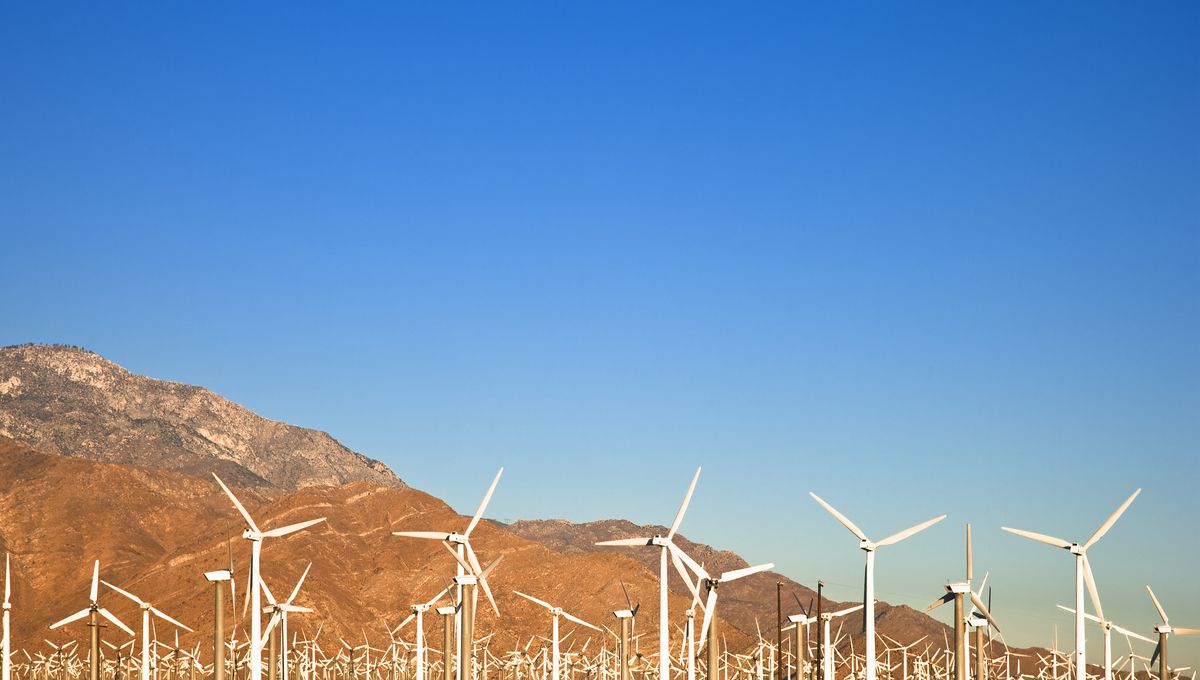
Overall, the turbines that provide wind-generated electricity are a great deal, environmentally speaking. They have a “payback” time – that is, the length of time taken for one turbine to provide enough clean energy to offset the pollution created by its manufacture – of less than a single year; they generate virtually zero pollution once they’re up and running; and they’re powerful enough that a single turbine could fuel about 940 average US homes per month, easy.
But they could be greener. “Right now, to our understanding, essentially no rare-earth elements from wind are recycled,” Tyler Christoffel, technology manager in the Department of Energy’s Wind Energy Technologies Office, told Grist.
It’s not a surprising statistic – globally, it’s estimated that less than one percent of rare-earth elements, which include substances such as cerium, lanthanum, and neodymium, are recycled. But neither is it good news: rare-earth elements are, as their name suggests, fairly difficult to find in useful quantities; some 70 percent of the world’s production is in China, and increasingly, it’s staying there.
Plus, rare-earth elements are only getting more important. They’re vital for everything from industrial applications to personal gadgets like your laptop or smartphone – and, of course, they’re in wind turbines.
“When the blades of a wind turbine turn, they generate kinetic energy that a permanent magnet generator then converts into electricity from the interplay between two permanent magnets with reverse polarity,” wrote Kristin Vekasi, associate professor in the Department of Political Science and School of Policy and International Affairs at the University of Maine, in a 2022 article for Harvard’s Weatherhead Center for International Affairs.
“While other magnets could do the job, permanent magnets have a number of advantages, including increased efficiency, smaller size, fewer moving parts that can break, and no need for an external charge,” she explained. “The wind is doing all the work.”
It’s within these magnets that we find the rare-earth elements – usually either neodymium or samarium. They’re extremely powerful – the most powerful magnets that exist at all – but they aren’t indestructible: they can lose magnetism through overheating, corrosion, random impacts, or even a stray magnetic field here and there.
As such, “repowering” turbines – that is, swapping out tired parts, upgrading components like generators, and, yes, replacing rare-earth magnets – is a near-constant process. So, facing a future in which rare-earth elements are increasingly sparse, the Department of Energy decided to outsource the problem: in mid-2023, they launched a contest aimed at finding robust recycling solutions for the single-use components of turbines.
Last month, the 20 winners of the first stage of the competition were announced – four of which were focused on recycling magnets specifically. Teams from universities and industry have submitted a wide range of potential solutions, all based on pre-existing technologies that have simply not yet been exploited at scale.
The “winning teams presented innovative technology ideas that exemplify the creative, problem-solving skills we need to build a highly sustainable wind turbine recycling industry,” said Jeff Marootian, Principal Deputy Assistant Secretary for Energy Efficiency and Renewable Energy, in a statement last month. “On top of that, these domestic recycling solutions enhance our energy security by reducing the nation’s dependence on foreign materials.”
Those teams are now busy with phase 2 of the competition: developing a prototype demonstration of their idea, plus a plan to bring the tech to scale. If all goes well, wind turbine resource reclamation may help the US avoid a rare-earth supply catastrophe within the next few decades.
As the country invests ever more in wind power – and other technology relying on these elements continues to proliferate – rare-earth recycling is set to “become a much more pressing issue,” Christoffel told Grist.
“What this prize really helps to do is advance some of these recycling technologies that can offer a lower-emissions, lower-resource use [path] to a magnet,” he said.
[H/T Grist]
Source Link: Rare-Earth Elements Are Essential For Wind Turbine Magnets – Can We Recycle Them?